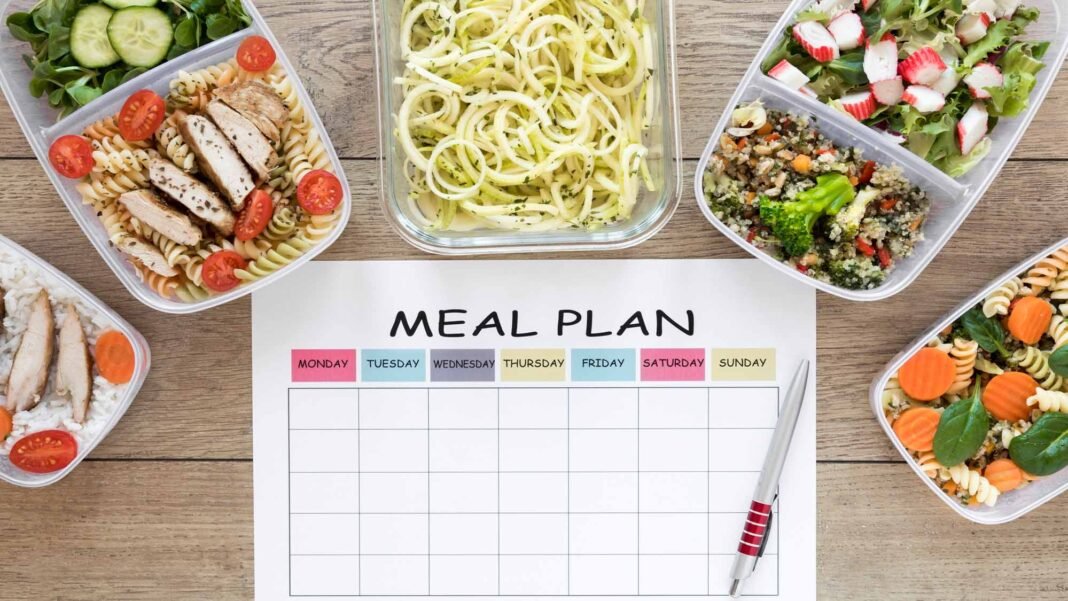As we age, maintaining a healthy and balanced diet becomes more important than ever. However, spending hours preparing meals may not always be feasible or appealing, especially for seniors who are seeking a convenient way to nourish their bodies. A well-planned meal plan tailored to the specific needs of older adults can help strike the right balance between nutrition, simplicity, and enjoyment. Here’s a seven-day meal plan designed with seniors in mind—focused on delicious, easy-to-make dishes that provide essential nutrients while supporting overall health and vitality.
The 7-Day Meal Plan for Seniors
Monday:
- Breakfast: A hearty bowl of oatmeal topped with fresh fruit such as strawberries, blueberries, or cranberries, and a sprinkle of chopped nuts (pecans, walnuts, almonds).
- Lunch: A comforting vegetable soup, either homemade or from a quality store-bought brand.
- Dinner: A salmon fillet wrapped in a whole-wheat tortilla with lettuce, chopped tomato, and diced onions for a light yet satisfying meal.
Tuesday:
- Breakfast: A refreshing smoothie made with strawberries, banana, blueberries, low-fat Greek yogurt, almond butter, and a handful of baby spinach.
- Lunch: Canned tuna mixed with diced tomatoes and red onions, topped with creamy avocado slices.
- Dinner: Whole-grain pasta served with grilled chicken and a medley of roasted vegetables like zucchini, red peppers, and broccoli.
Wednesday:
- Breakfast: Scrambled eggs with diced onion, tomato, and green peppers, served alongside a slice of whole-grain toast.
- Lunch: A bowl of quinoa topped with fresh spinach or kale, roasted red peppers, mushrooms, and grilled chicken.
- Dinner: A baked chicken breast paired with either brown rice or a baked potato for a satisfying, protein-packed meal.
Thursday:
- Breakfast: A multi-grain bagel spread with almond or peanut butter for a simple, nutritious start to the day.
- Lunch: A hard-boiled egg, fresh tomato, and cucumber served on whole-wheat bread for a light, yet filling sandwich.
- Dinner: Thinly sliced sirloin steak combined with sautéed onions, zucchini, and mushrooms for a flavorful and nutrient-rich dish.
Friday:
- Breakfast: Low-fat yogurt topped with a mix of chopped nuts (pecans, walnuts, or cashews) and fresh fruit such as bananas, strawberries, and blueberries.
- Lunch: Another round of tuna mixed with diced tomatoes and red onions, complemented by creamy avocado slices.
- Dinner: A repeat of chicken breast with brown rice or baked potato for another wholesome and easy-to-prepare meal.
Saturday:
- Breakfast: Oatmeal again, this time with a mix of berries (strawberries, blueberries, cranberries) and your choice of nuts (pecans, walnuts, almonds) for a comforting start to the day.
- Lunch: A hearty bowl of chickpeas, topped with crumbled feta cheese, diced tomatoes, and onions for a filling plant-based meal.
- Dinner: A baked sweet potato topped with low-sodium black beans, diced tomatoes, peppers, and melted cheese for a nutrient-dense, flavorful dinner.
Sunday:
- Breakfast: Scrambled eggs once again, this time with onion, tomato, and green peppers, served with a side of whole-grain toast.
- Lunch: A warm, hearty lentil and vegetable soup, either homemade or from a trusted store brand.
- Dinner: Whole-grain pasta with grilled chicken and a mix of sautéed vegetables like zucchini, roasted red peppers, or broccoli.
Why This Meal Plan Works for Seniors
As we age, our nutritional needs change. The body becomes less efficient at absorbing certain nutrients, and specific health concerns may arise that require careful dietary attention. A specialized meal plan, like the one above, addresses these issues by focusing on nutrient-dense foods that are easy to prepare and digest. Here are some reasons why this approach works particularly well for older adults:
1. Nutritional Balance:
Aging can lead to a decrease in appetite or difficulty absorbing certain vitamins and minerals. A balanced diet, rich in lean proteins, healthy fats, and fiber, ensures that seniors meet their daily nutritional needs. The meals in this plan incorporate a variety of fruits, vegetables, whole grains, and healthy fats, ensuring a wide range of nutrients such as calcium, fiber, and antioxidants.
2. Supports Health Conditions:
Seniors often deal with chronic conditions like heart disease, diabetes, and osteoporosis. This meal plan includes heart-healthy fats (such as those found in fish and olive oil), anti-inflammatory foods (like leafy greens and berries), and nutrient-rich vegetables that help combat these conditions. It also emphasizes foods that support bone health, such as dairy, leafy greens, and fortified grains.
3. Protein for Muscle Maintenance:
Maintaining muscle mass becomes increasingly important as we age. Protein is a key factor in preserving muscle function and preventing age-related muscle loss. Meals like scrambled eggs, chicken breast, and salmon provide the necessary protein to support muscle maintenance.
4. Ease of Preparation:
For seniors who may struggle with mobility or simply want to minimize time spent in the kitchen, simplicity is key. This meal plan includes dishes that are easy to prepare and don’t require extensive cooking skills. Many of the meals can be made with just a few ingredients and minimal kitchen tools, making it convenient for anyone with physical limitations.
5. Preventing Overeating or Undereating:
As we age, our calorie needs decrease, but the need for certain nutrients increases. The meals in this plan are designed to offer a good balance of calories without excess, focusing instead on nutrient-dense options that provide maximum health benefits without the need for large portions.
How to Make This Meal Plan Work for You
Making meal planning a regular habit doesn’t have to be overwhelming. Here are a few tips to help ensure that this meal plan is both effective and sustainable:
- Choose foods that align with your dietary needs: If you have specific health concerns like diabetes, heart disease, or digestive issues, adapt the meal plan to suit your needs. For example, reduce the use of high-sodium canned goods or focus on low-glycemic index foods if managing blood sugar.
- Incorporate variety while sticking to essentials: While you can swap out vegetables or proteins based on what you enjoy or have available, aim to stick to nutrient-dense staples like leafy greens, legumes, and healthy fats to meet your dietary goals.
- Simplify preparation and cooking: To minimize effort in the kitchen, batch cook meals like soups or grains (such as quinoa or rice) in advance. This can save time and ensure you always have a healthy meal ready to go.
Conclusion
A well-balanced diet is key to maintaining health and vitality as we age. This 7-day meal plan for seniors focuses on simplicity, nutrition, and enjoyment—providing easy-to-make meals that offer the right nutrients to support aging well. By incorporating a variety of nutrient-rich foods, seniors can fuel their bodies for the long haul, ensuring they stay strong, healthy, and full of energy. With a little planning and preparation, mealtime can remain an enjoyable part of each day.



